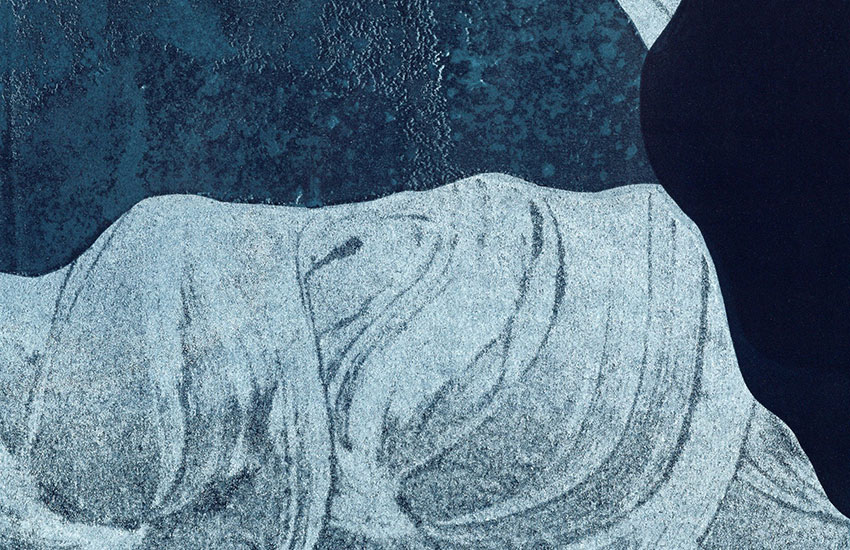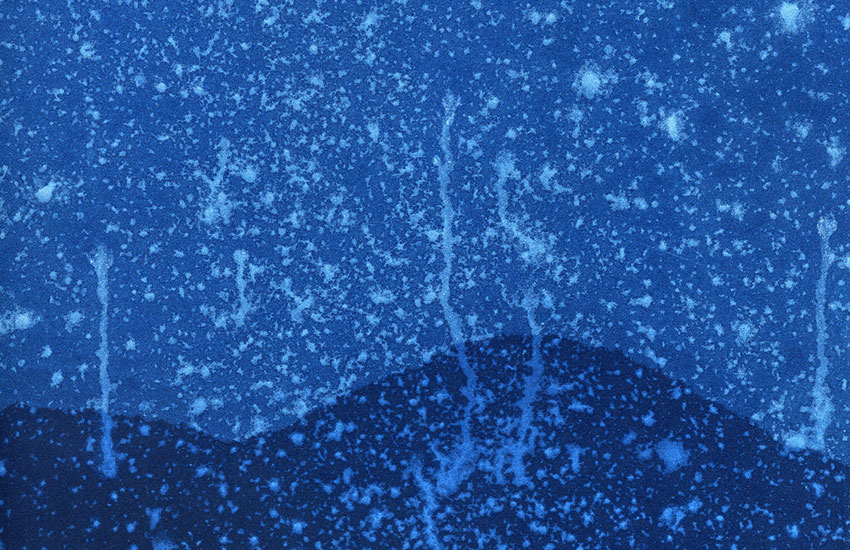Interview by Silvia Iacovcich

London-based musician and producer Guy Andrews’ interest in making music dates back to his early 20s when he was writing and producing ambient music using different aliases, focusing at first mainly on ethereal soundscapes. During his career, his sound has developed into a combination of influences from post-techno, dark ambient, and afrobeat-inspired genres. With a strong passion for sound textures, a style that inspired collaborations with recognised artists such as photographer Nadav Kander and Massive Attack’s Robert Del Naja, Andrew’s compositions, though, have always been guided by his emotional responses to events in his life.
Permanence, the producer’s most recent release, is true to this fact: a sonic autobiographical anthology where he examines past memories through sound textures and symbolisms. Released via Houndstooth this past September, the producer embarks on a reflective journey into his life as a stream of consciousness that scans his emotions on personal relationships, places and people. At the same time, it makes way for a more profound analysis over the perduration of memory and the way it translates into how we perceive ourselves.
Crafting sonic textures and layering sample background noises on programmed synthesisers, he employs samples to navigate different worlds: during the listening, we visualise specific locations in our heads as we hear the rain pitapat or the chimes of bells. These segments are voluntarily prolonged to slip into the listener’s more emotional and intimate sphere. It could be a sonic landscape of a scene that Guy has sampled in the past, which is now trying to reproduce with the added weight of the emotions he felt at the time.
Syncopated pulses, which are revealed suddenly, generate a crescendo that explodes unannounced, reaching an emotional turning point through a dramatic apex, to then dissipate again into ambient noise. It’s textural electronic music that stacks up layers of sound and guides us to an introspective state of mind; each stratum contributes to generating an essential and atmospheric sense of wholeness.
Using perpetual sounds in a dynamic shape, the contrast between synthetic and genuine makes this album familiar and hermetic at the same time, enveloping us in the experiential trip where we can forget about words for a little while.
Permanence will soon see an ambient ‘sequel’ [MT][NT][ET], which will include a further release of remixes by renowned and acclaimed experimental musician Kevin Drumm early next year. As a whole, in Andrews’ music, the layers and textural sounds translate into a deep symbolism – we move along the recordings exploring each layer as a coded language that the musician has intentionally left up for any personal interpretation.

You are a musician and producer working with electronics and dark ambient; how and when did the interest in your practice come about and what are your main inspirations?
I’ve been producing music since I was a teenager, and this stemmed from a fascination with how the music I was listening to was constructed. I try to make my music as personal to me as I can, so the inspiration comes directly from what I experience in life.
Your music and compositions are defined by openness and raw nature, guided by emotional responses to events in life. But what’s your creative process like?
The main shift I’ve had in the past few years is that I now deliberately spend very little time working on music. The bulk of my creative process occurs when I’m physically away from the studio – I spend time slowly conceptualising what I want to do and end up with a cluster of creative ideas before anything gets written.
This approach means that when I return to the studio, I have a lot of starting points to work from. If a composition isn’t working in the first 20 minutes with the ideas I have, I’ll switch to another recent project and see if what’s in my mind can be applied elsewhere.
Permanence is a body of work that symbolises and articulates the constant evolution of relationships and the concept of change. How does this concept integrate or articulate with the sound compositions?
There is a lot of subtlety in Permanence, and the story behind it is told through how the textures evolve and interact with each other. I tend to keep the true meanings hidden, but the main theme is based on a concept of dynamic permanence, where the only thing we can classify as permanent is the framework in which we exist. I communicate through the sonic textures by bringing certain elements into the listener’s focus, prompting them to perhaps explore their own interpretation of what’s going on at that particular moment.
And what have you technically been exploring? What were the challenges your faced?
I’ve been really intrigued by how I can harness the sounds and rhythm of what is naturally happening around me to drive a whole composition. The biggest challenge with this approach is taking suitable field recordings that can be translated into the required format in order to influence a composition.
How do you see your practice evolving, and how does the new release articulate with the previous productions? What is your composing/producing interest these days?
I now spend a lot of my time thinking about how technology can influence my creativity. My original creative process had two fairly structured steps of compositional decision-making. The first step determined the theme of the composition dependent on current life experiences – answering the question: what’s on my mind right now? – the second step then selected what kind of notes, chords and sounds that might be able to portray this. This is essentially traditional songwriting.
The progression for me in my most recent work has been to add another node to this process, which in its own right impacts the output of the first two stages but works autonomously. This is where technology comes in – I’m using data streams to influence the composition and sound design.
And what’s your relationship with technology nowadays? How do you cope with screen overload?
I am a huge advocate for utilising technology for creativity. I enjoy the blank canvass and endless options that a computer presents, but I’ve learnt that you need to approach it with a purpose.
Solitude or loneliness, how do you spend the time on your own?
I am pretty good at spending time by myself, I can easily bury myself in my thoughts!
You couldn’t live without…
Nature.






